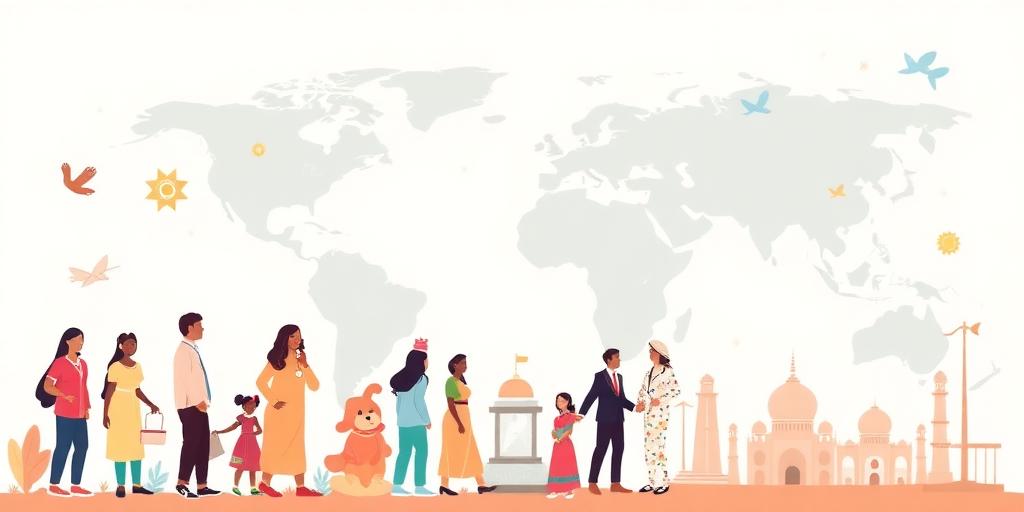Ensuring Health Equity for Marginalized Communities: A 2025 Perspective (India & Global)
Health equity, the principle that everyone should have a fair and just opportunity to be as healthy as possible, remains a critical global challenge, particularly for marginalized communities. As we approach 2025, it’s essential to examine the current landscape, ongoing efforts, and future strategies to address health disparities in India and globally.
Defining Marginalized Communities
Marginalized communities encompass various groups facing systemic barriers to accessing healthcare and achieving optimal health outcomes. These include:
- Ethnic and racial minorities: Often face discrimination and cultural barriers.
- Low-income populations: Struggle with affordability and access to care.
- Rural populations: Experience geographic barriers and limited resources.
- LGBTQ+ individuals: Encounter stigma and discrimination in healthcare settings.
- People with disabilities: Face physical and attitudinal barriers.
Health Disparities: A Global and Indian Perspective
Significant health disparities persist across the globe. In India, marginalized communities often experience:
- Higher rates of infectious diseases (e.g., tuberculosis, HIV/AIDS).
- Increased maternal and child mortality.
- Limited access to sanitation and clean water.
- Higher prevalence of chronic diseases (e.g., diabetes, cardiovascular disease) due to poor nutrition and lack of preventative care.
Globally, similar patterns emerge, with marginalized communities bearing a disproportionate burden of disease and premature death.
Key Challenges in Achieving Health Equity
Several interconnected challenges hinder progress towards health equity:
- Socioeconomic Factors: Poverty, lack of education, and unemployment contribute significantly to poor health outcomes.
- Discrimination and Stigma: Prejudice based on race, ethnicity, gender identity, sexual orientation, and disability creates barriers to accessing care and receiving respectful treatment.
- Geographic Barriers: Remote and underserved areas lack adequate healthcare infrastructure and trained personnel.
- Cultural and Linguistic Barriers: Language differences and cultural norms can impede effective communication and access to culturally appropriate care.
- Lack of Data and Research: Insufficient data on the specific health needs of marginalized communities limits the development of targeted interventions.
Strategies for Advancing Health Equity in India and Globally
Addressing health inequities requires a multifaceted approach involving governments, healthcare providers, community organizations, and individuals:
- Strengthening Healthcare Systems: Investing in primary healthcare, expanding access to essential medicines and technologies, and training healthcare professionals to serve marginalized communities are crucial.
- Addressing Social Determinants of Health: Implementing policies that address poverty, improve education, promote employment, and ensure access to safe housing and nutritious food.
- Combating Discrimination and Stigma: Promoting awareness and education to reduce prejudice and discrimination in healthcare settings and society at large.
- Improving Data Collection and Research: Gathering comprehensive data on the health status and needs of marginalized communities to inform targeted interventions and policies.
- Empowering Communities: Engaging marginalized communities in the design and implementation of health programs to ensure they are culturally appropriate and responsive to local needs.
- Leveraging Technology: Utilizing digital health technologies to expand access to care, provide health information, and monitor health outcomes in remote and underserved areas.
India-Specific Initiatives
India has launched several initiatives aimed at improving health outcomes for marginalized communities, including:
- National Health Mission (NHM): Aims to provide accessible, affordable, and quality healthcare services to all, with a focus on rural and underserved areas.
- Ayushman Bharat: Provides health insurance coverage to vulnerable populations.
- Poshan Abhiyan: Addresses malnutrition among children, adolescent girls, and pregnant women.
The Path Forward: 2025 and Beyond
Ensuring health equity requires sustained commitment and collaborative action. As we approach 2025, it’s crucial to:
- Increase investment in health equity programs: Allocate sufficient resources to address the social determinants of health and strengthen healthcare systems.
- Promote accountability: Monitor progress towards health equity goals and hold governments and healthcare providers accountable for addressing disparities.
- Foster innovation: Encourage the development and implementation of innovative solutions to address health challenges in marginalized communities.
- Strengthen partnerships: Collaborate across sectors and stakeholders to create a more equitable and just healthcare system.
By addressing the root causes of health inequities and implementing evidence-based strategies, we can create a healthier and more equitable future for all, leaving no one behind. The journey towards health equity is a marathon, not a sprint, requiring unwavering dedication and a shared commitment to social justice.
